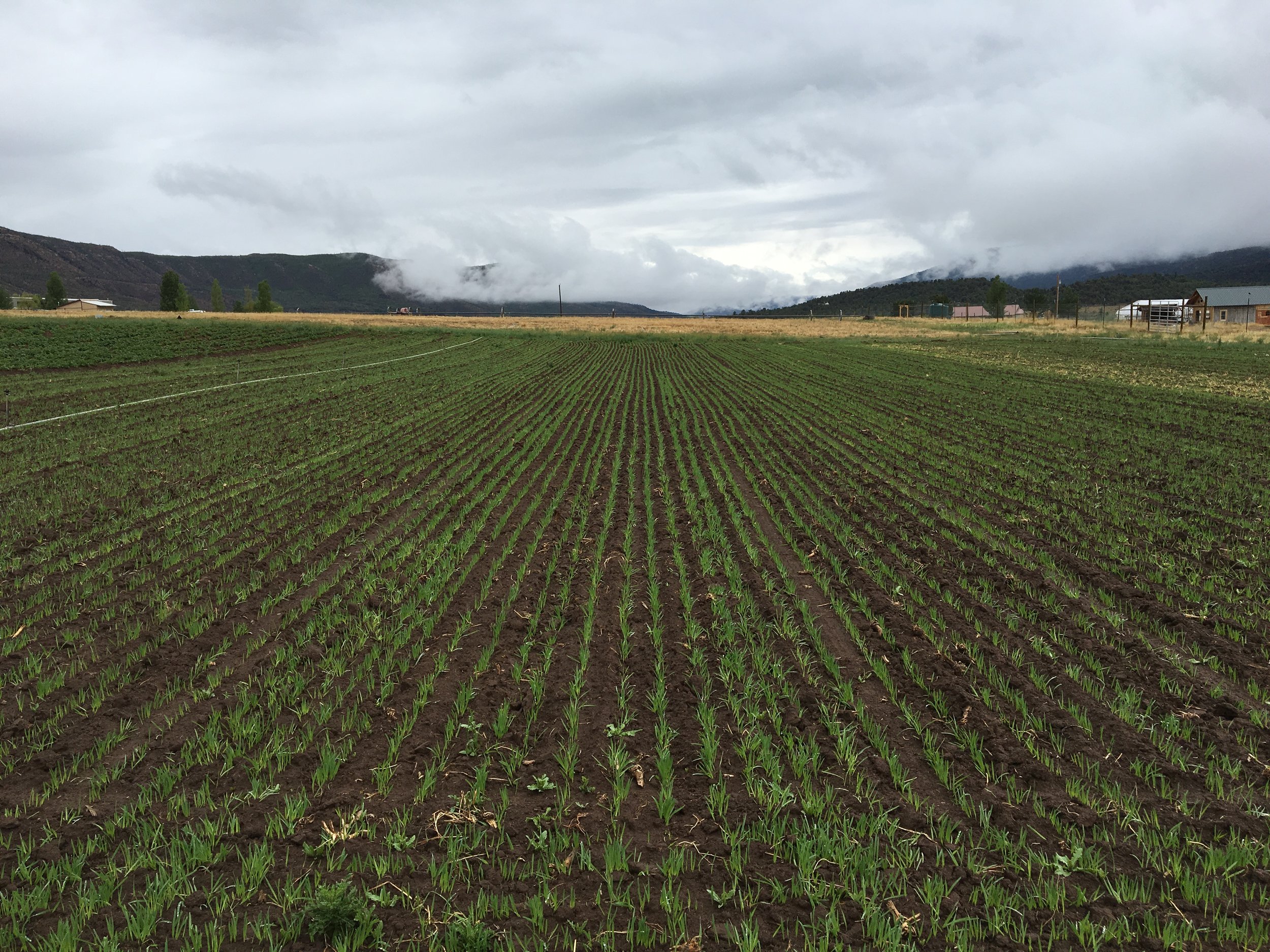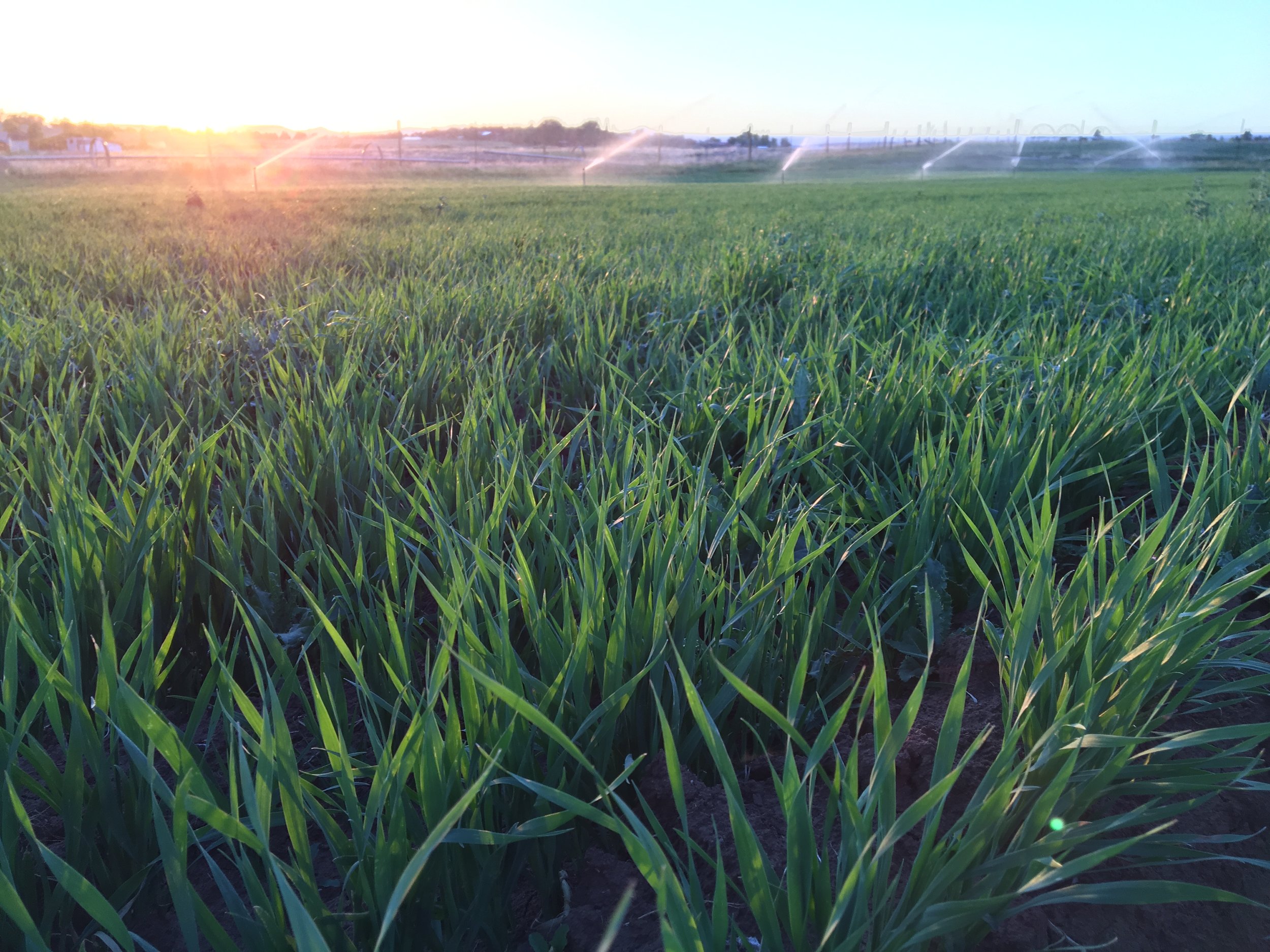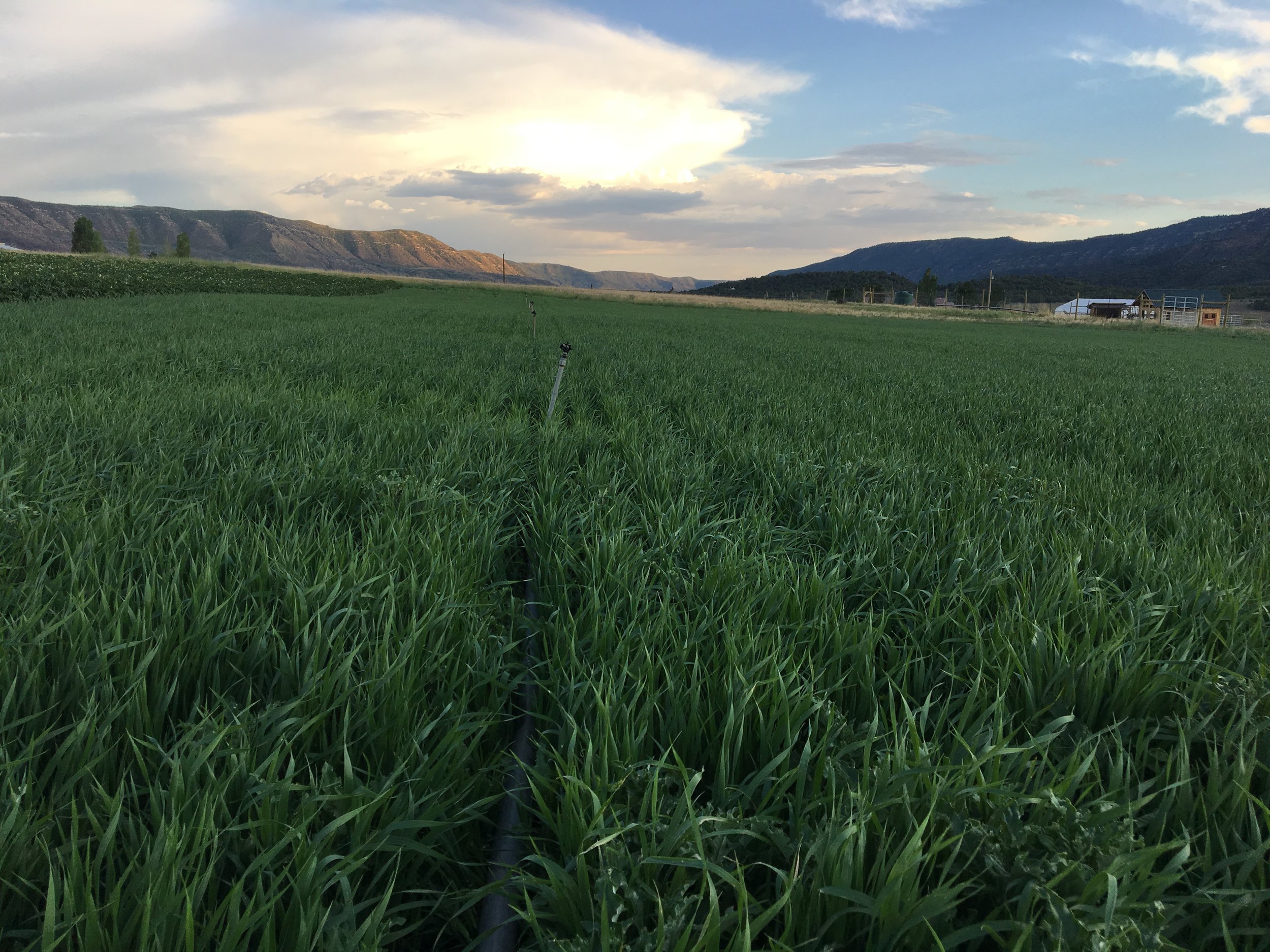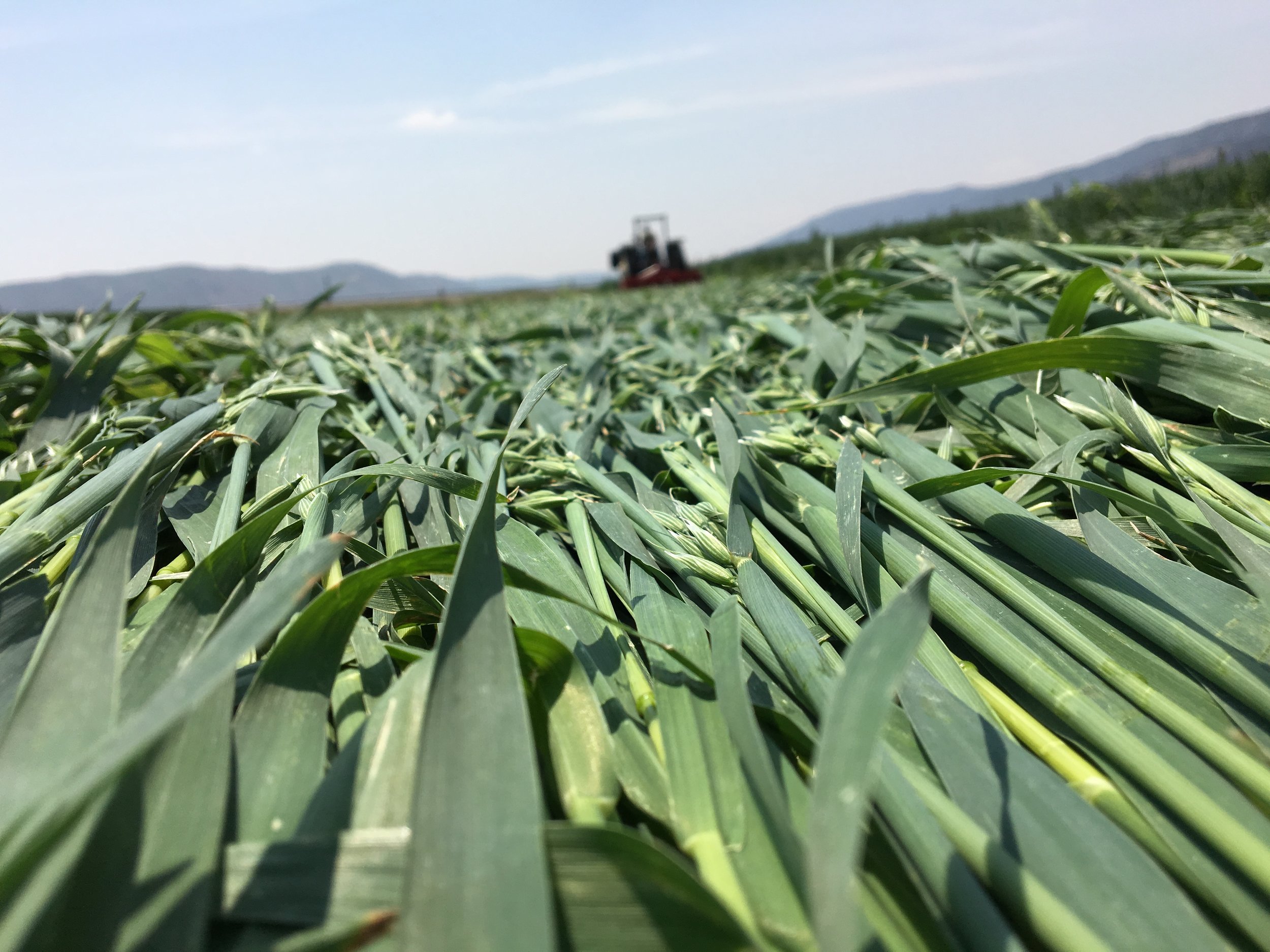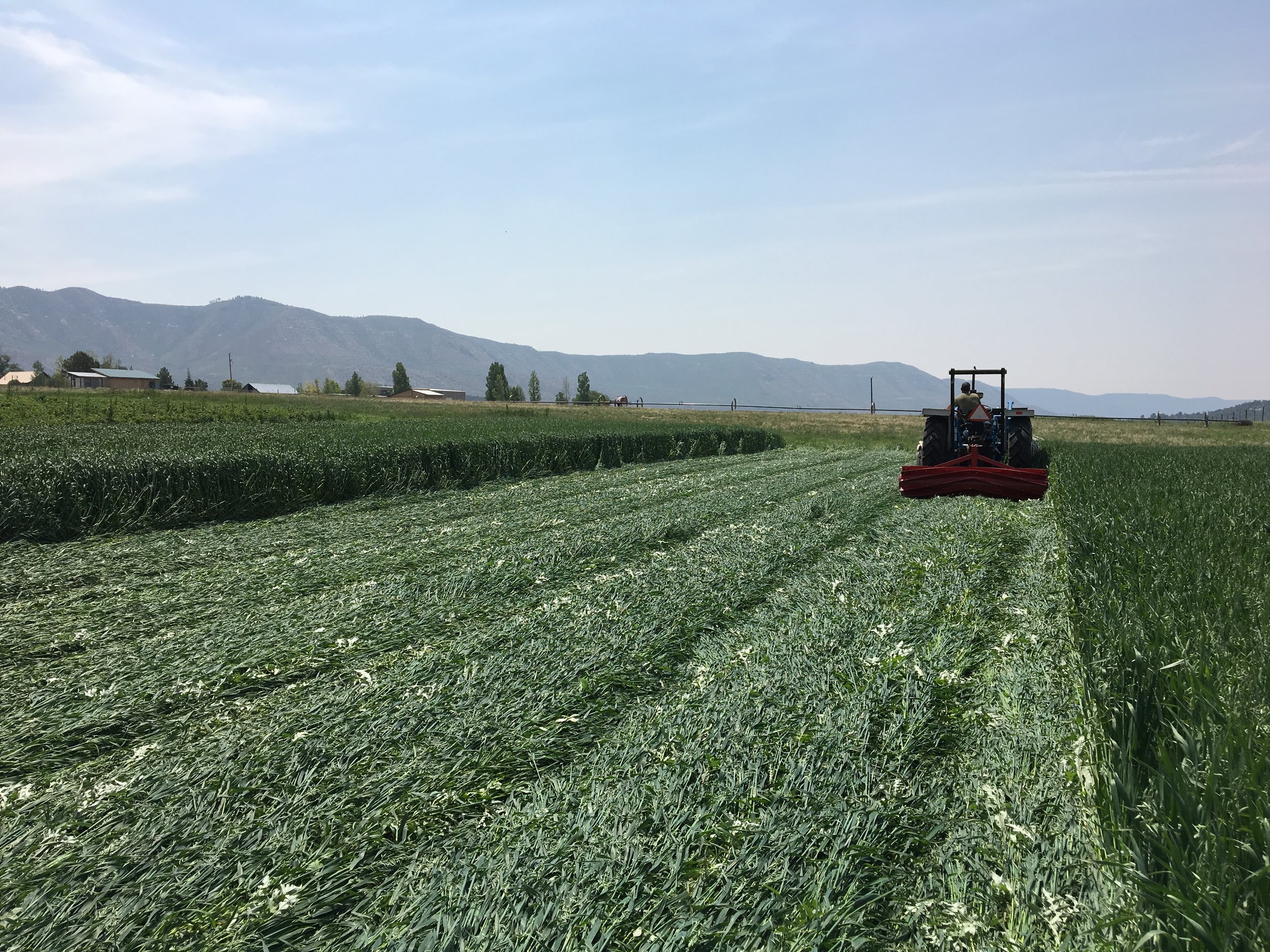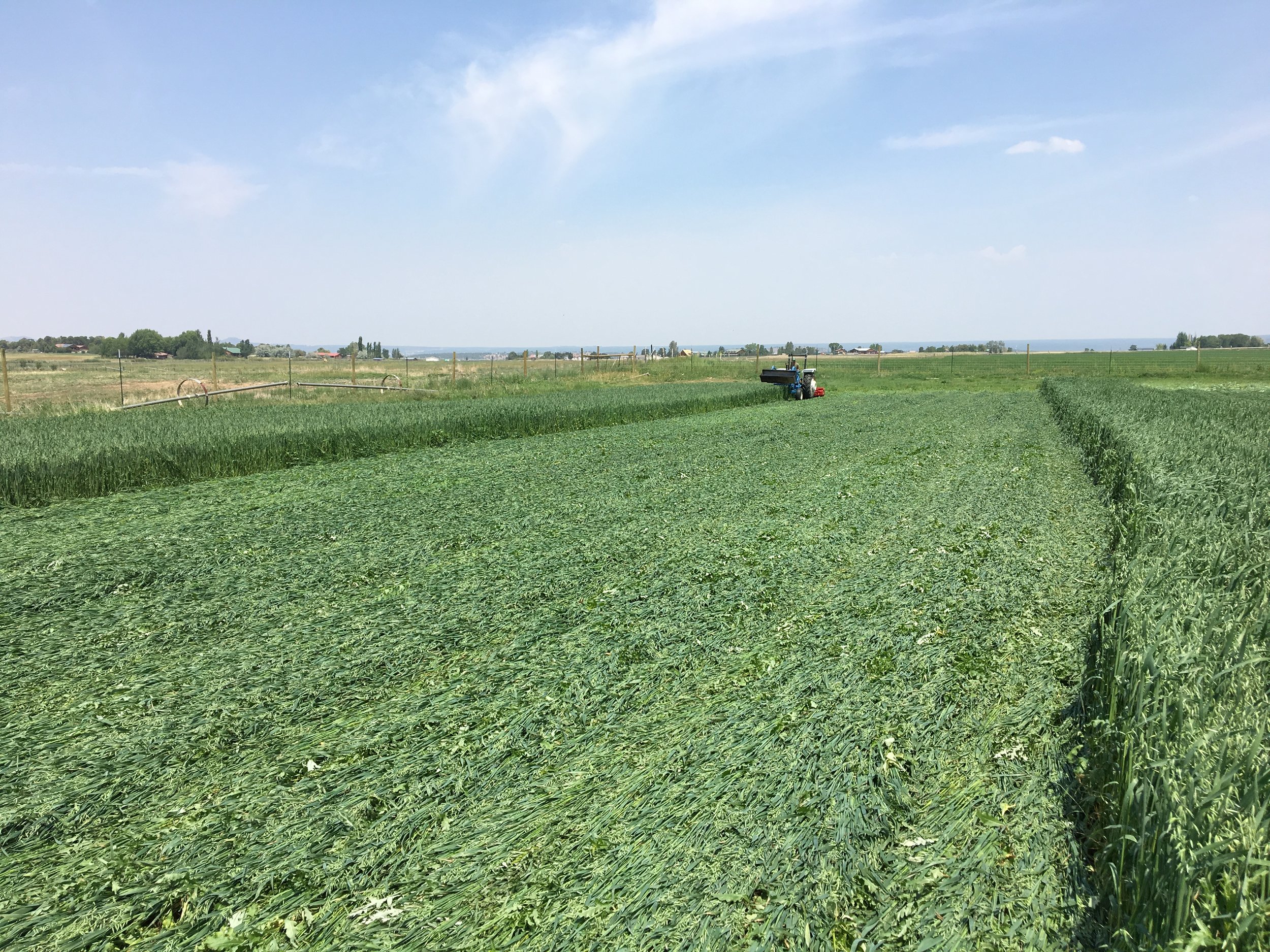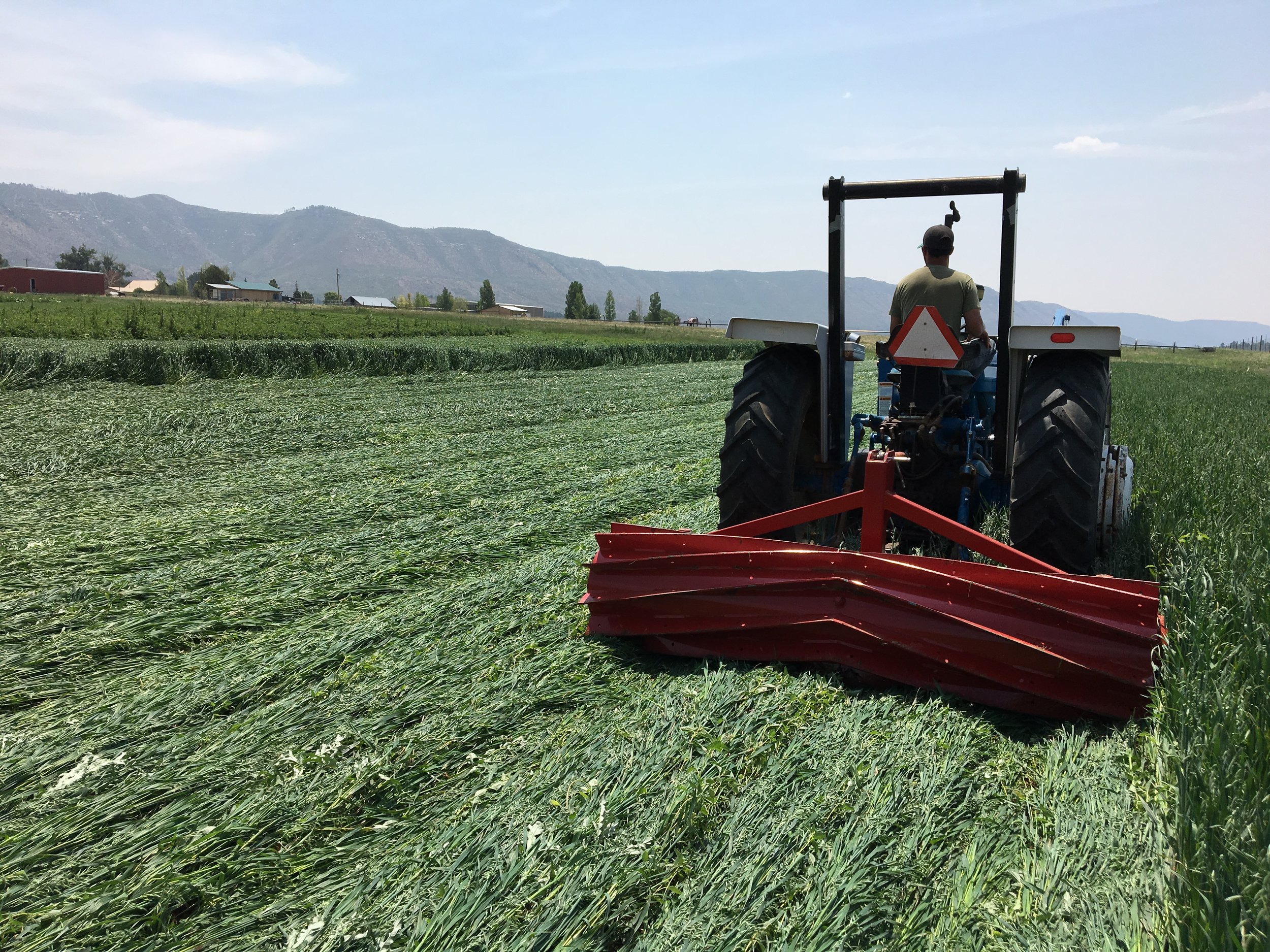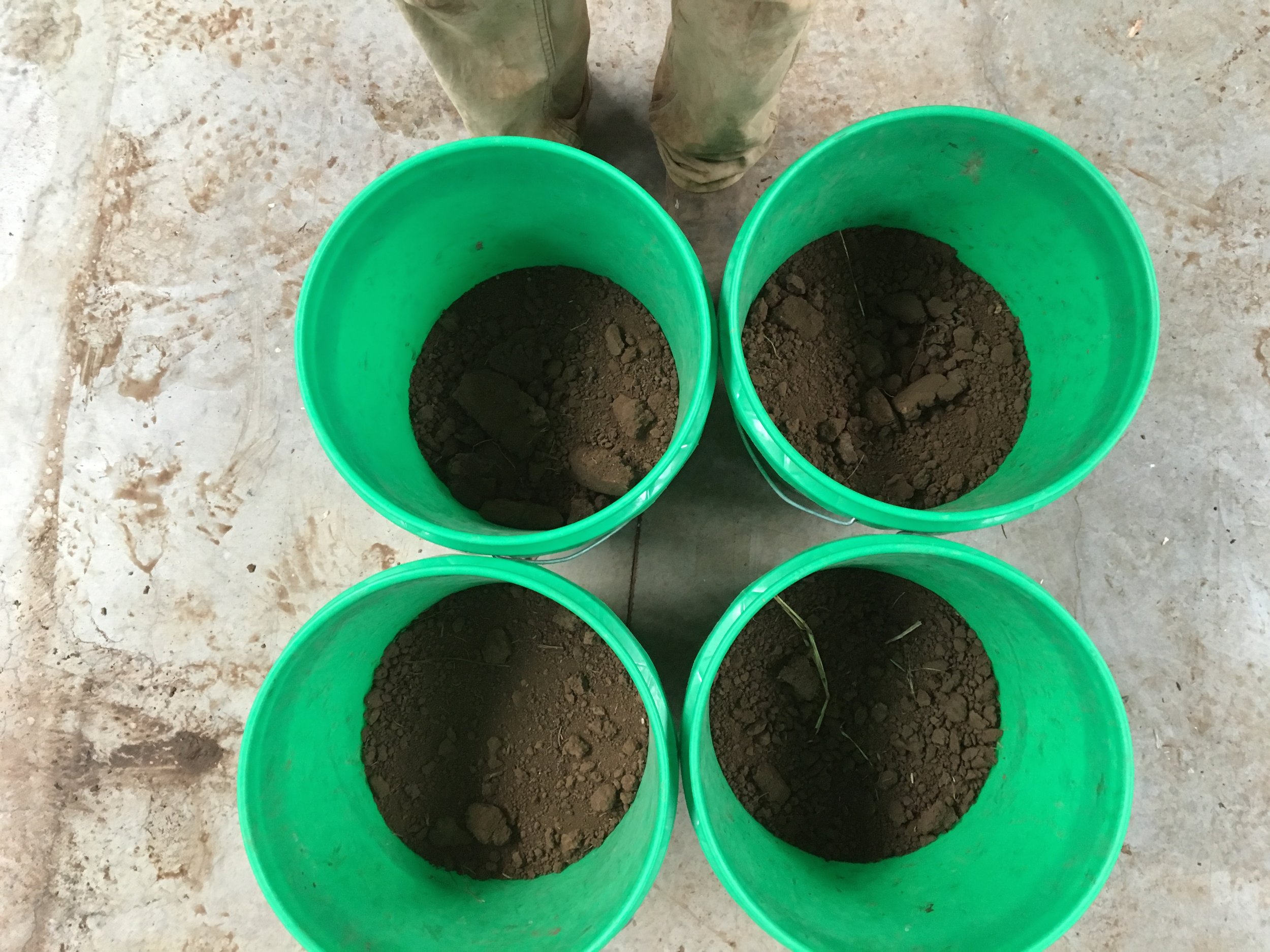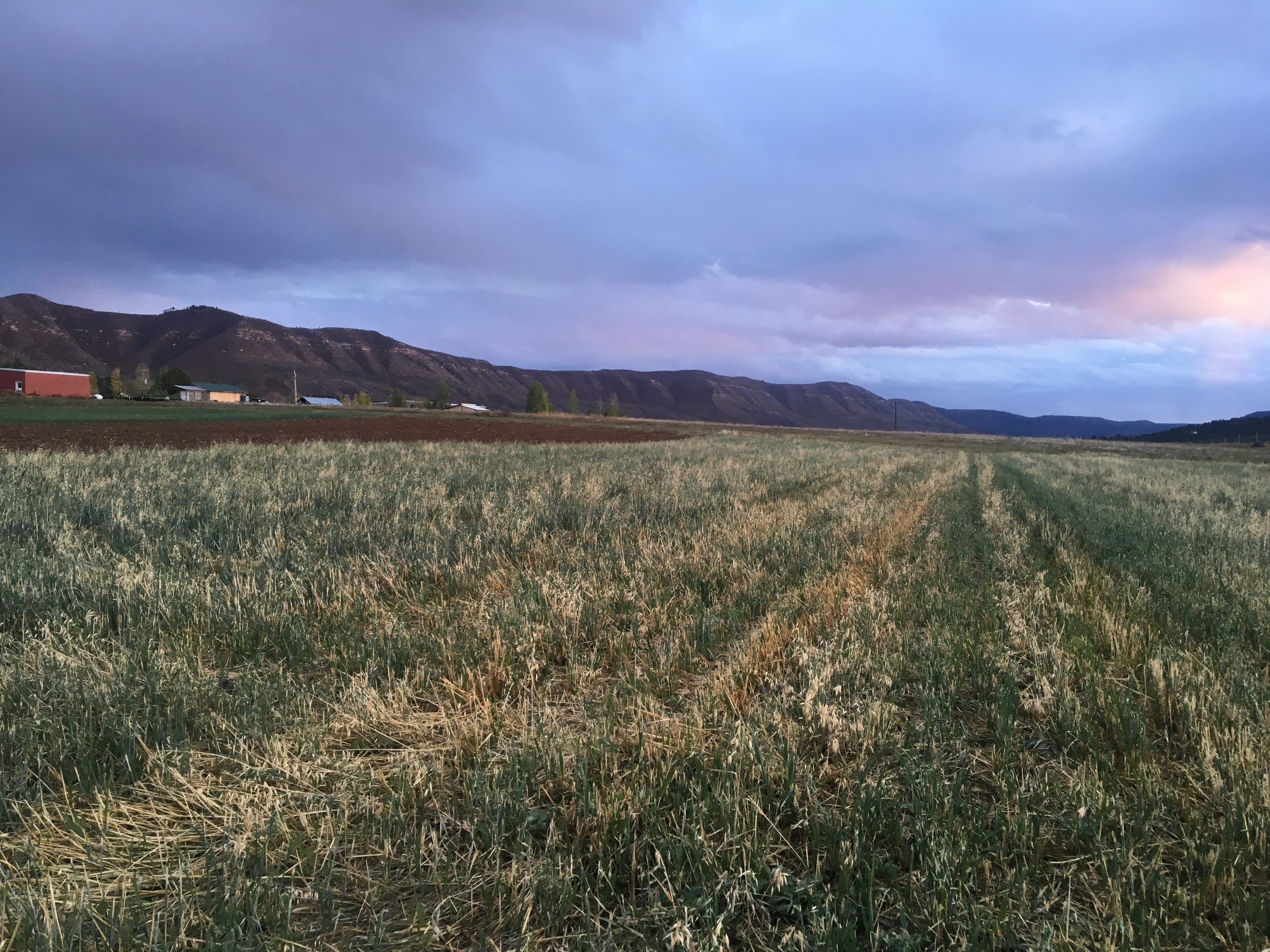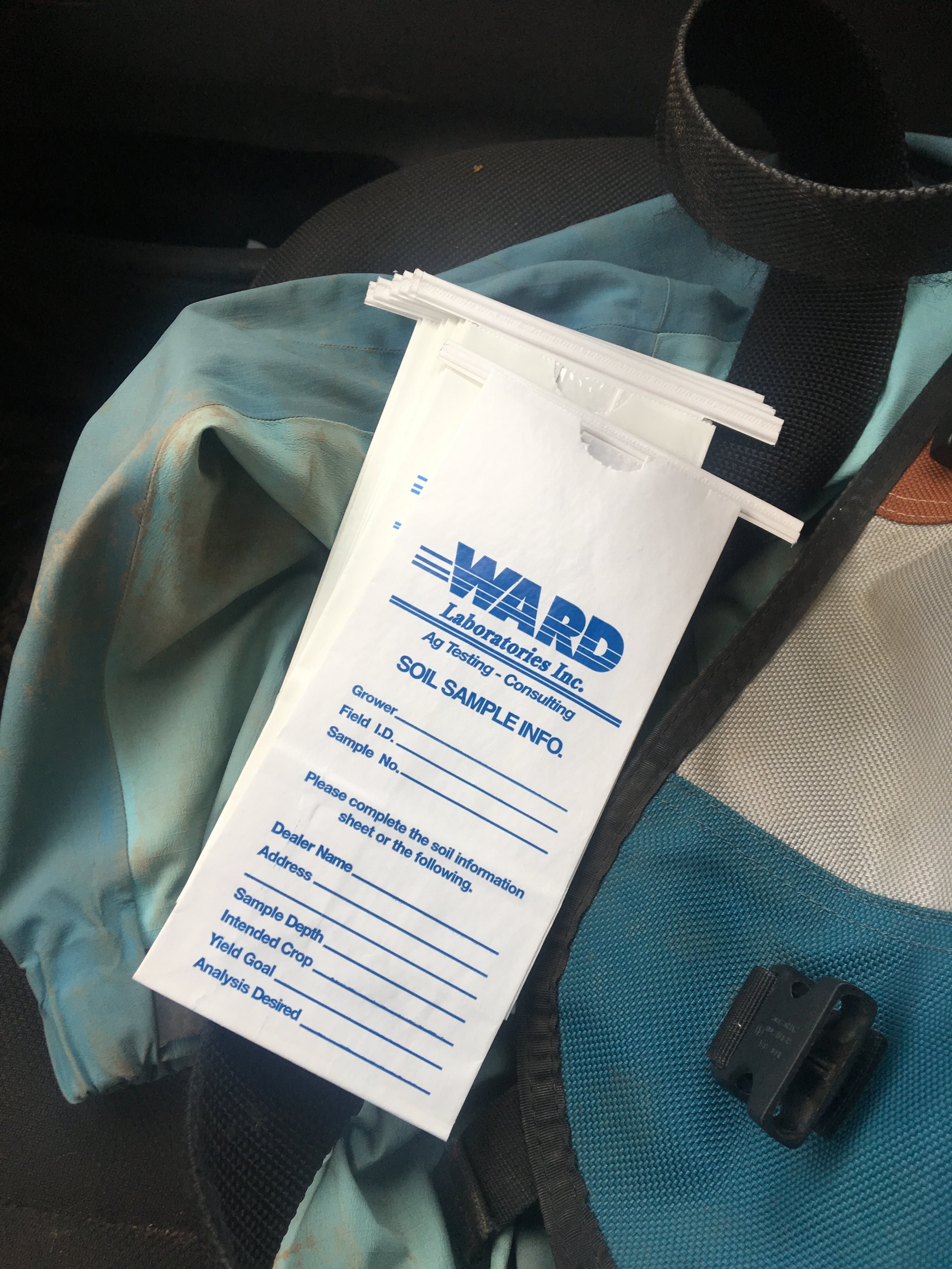If there is one day from the 2018 growing season that stands out crisp and clear in my mind… this was it. We spent the morning crimping a cover crop of oats for a research project/study that we are doing with Western SARE.
As farmers, we are always looking for and contemplating ways to improve how we are producing vegetables and caring for our soil. How can we grow produce in Southwest Colorado while improving our soil, reducing tillage and weed pressure and bettering our bottom line? We have been tossing around the idea of incorporating crimping and strip tilling into our management practices for several years and are excited to see those ideas turn to reality.
We applied for and were awarded a Western SARE grant this Spring! Our proposal is titled Managing Canada Thistle for Soil Health and Greater Farm Profitability Through Crimped Cover Crop and Strip Tillage on Annual Brassicas and Cucurbits.
Here’s the basic idea. Over the course of three years we will grow cover crops, cucurbits and brassicas in a test block and a control block and collect and compare data on soil health, time spent on weed management, water usage, as well as crop yields.
Our test field was initially cover cropped with oats during the Summer of 2018 (which you see in the photos throughout this post). The oats grew to about 4 feet tall and were terminated using the roller crimper (large red implement behind tractor). The crimped oat residue is left in place as a thick layer of mulch, covering and protecting the soil.
In the spring of 2019, we will come into this test field and prepare small 8 inch wide planting beds on 48 inch centers using a strip tiller. This means all of the crimped residue remains in place in between the 8 inch strip tilled beds, and most of the field and soil will not be disturbed. We plan to direct sow cucurbits (zucchini, winter squash) and transplant brassicas (cabbage, cauliflower and broccoli) into the strip tilled beds.
At the same time, we will have a control field that is prepped and planted using our current system. In this field, we will flail mow the fall seeded cover crop or triticale, vetch, pea in April or May and disc in the cover crop residue. We will then shape beds and direct sow and transplant the same crops that we are growing in the test field.
Throughout the project we will be collecting data on water usage, plant health and vigor, time spent on weed management, crop yields and soil health. We are really excited to see and compare the data collected in test field and the control field.
To compare the soil health we will be doing both the Haney Soil Test to analyze current NPK, micro nutrient levels and organic matter and PFLA Test for soil biome health and volume. We took the first soil samples for the project this fall and sent them to Ward Laboratories for testing.
In the fall of 2019, once the crop has been harvested we will run a flail mower through the test field to terminate all remaining plant residues and then a cover crop of triticale will be planted using a no-till drill into the field and irrigated.
The control field will also be flail mowed in the fall, the crop residues will be disced in, and then we will seed cover crop of triticale, purple hairy vetch and winter pea using a seed drill.
We will replicate the field prep, crops and data collection in 2020.
Wahoo! Farm experiments. We are excited to keep you all updated on the progress of this project. We plan to do a field day in the Spring of 2019 to demonstrate the strip tiller and go into more detail of the project with local growers and advocates. Stay tuned!

